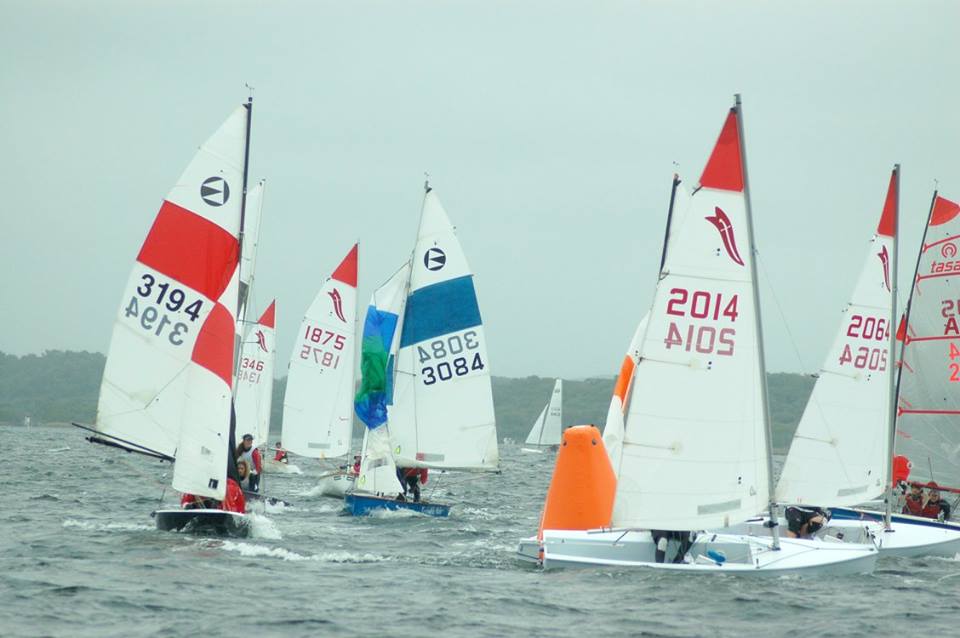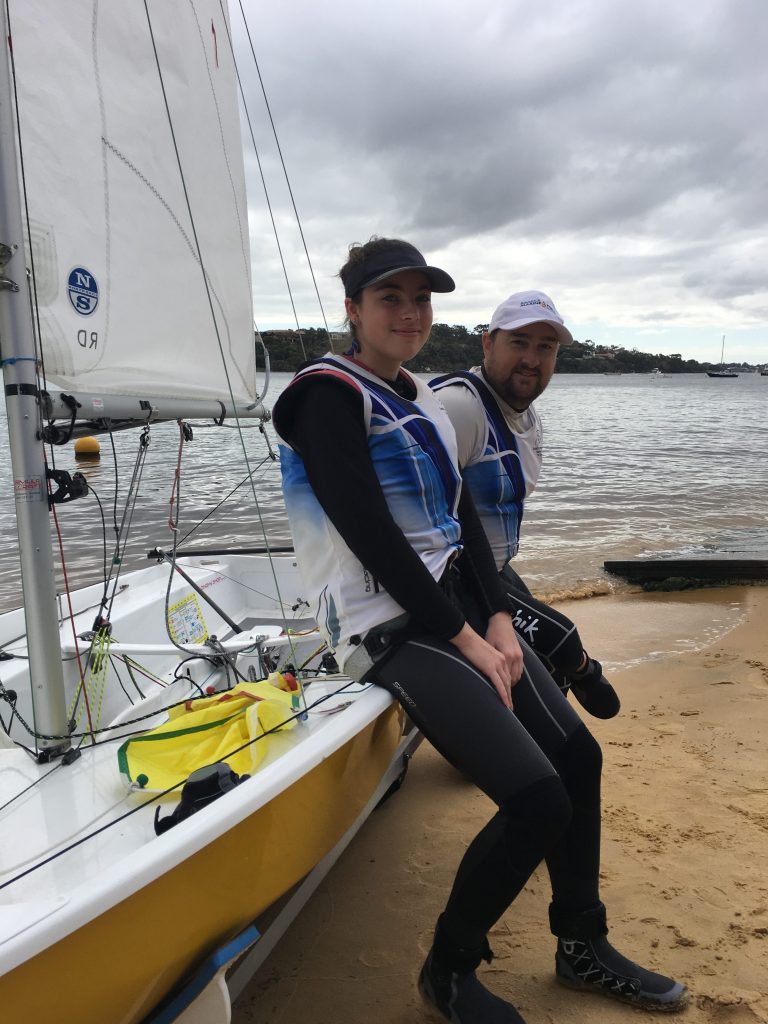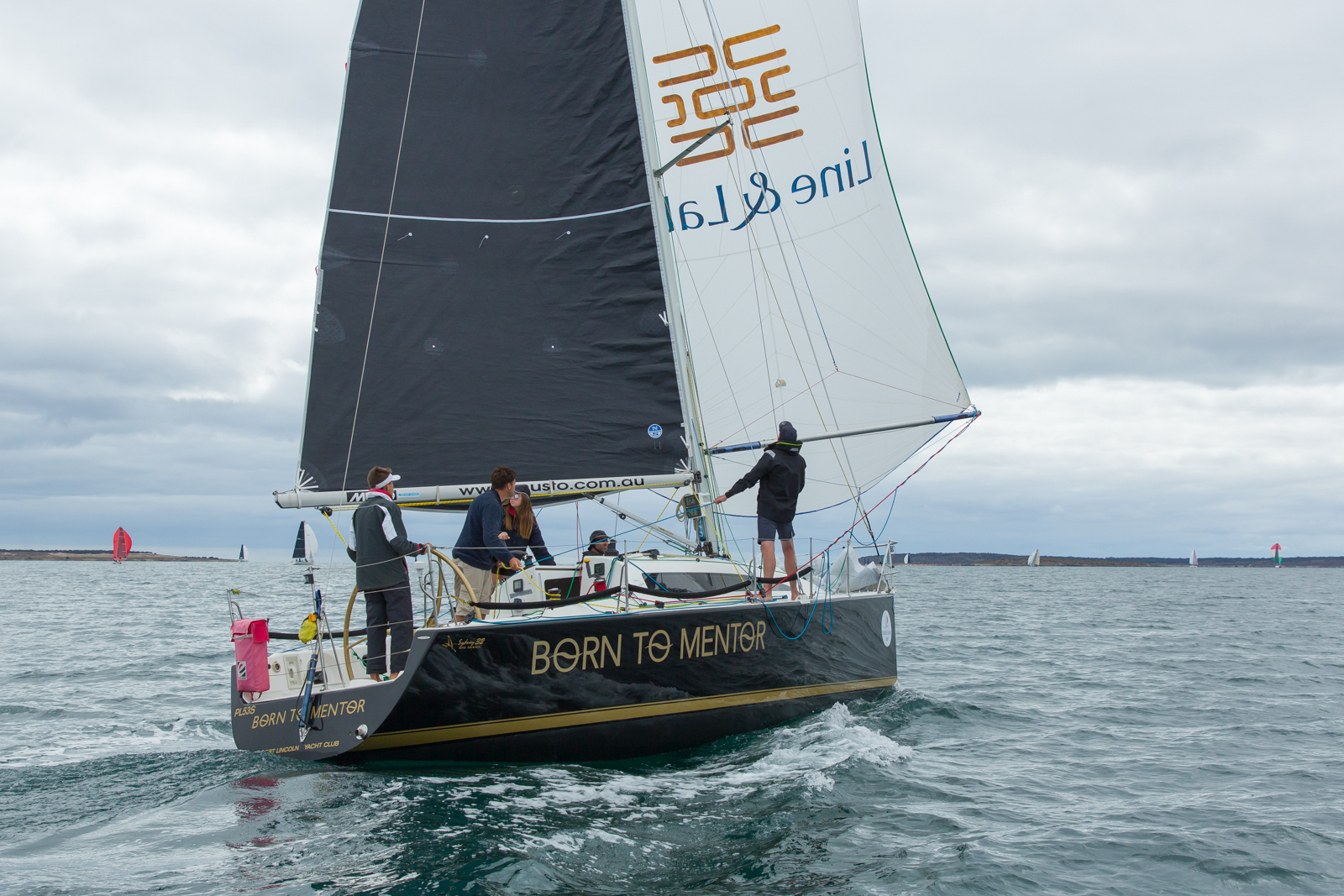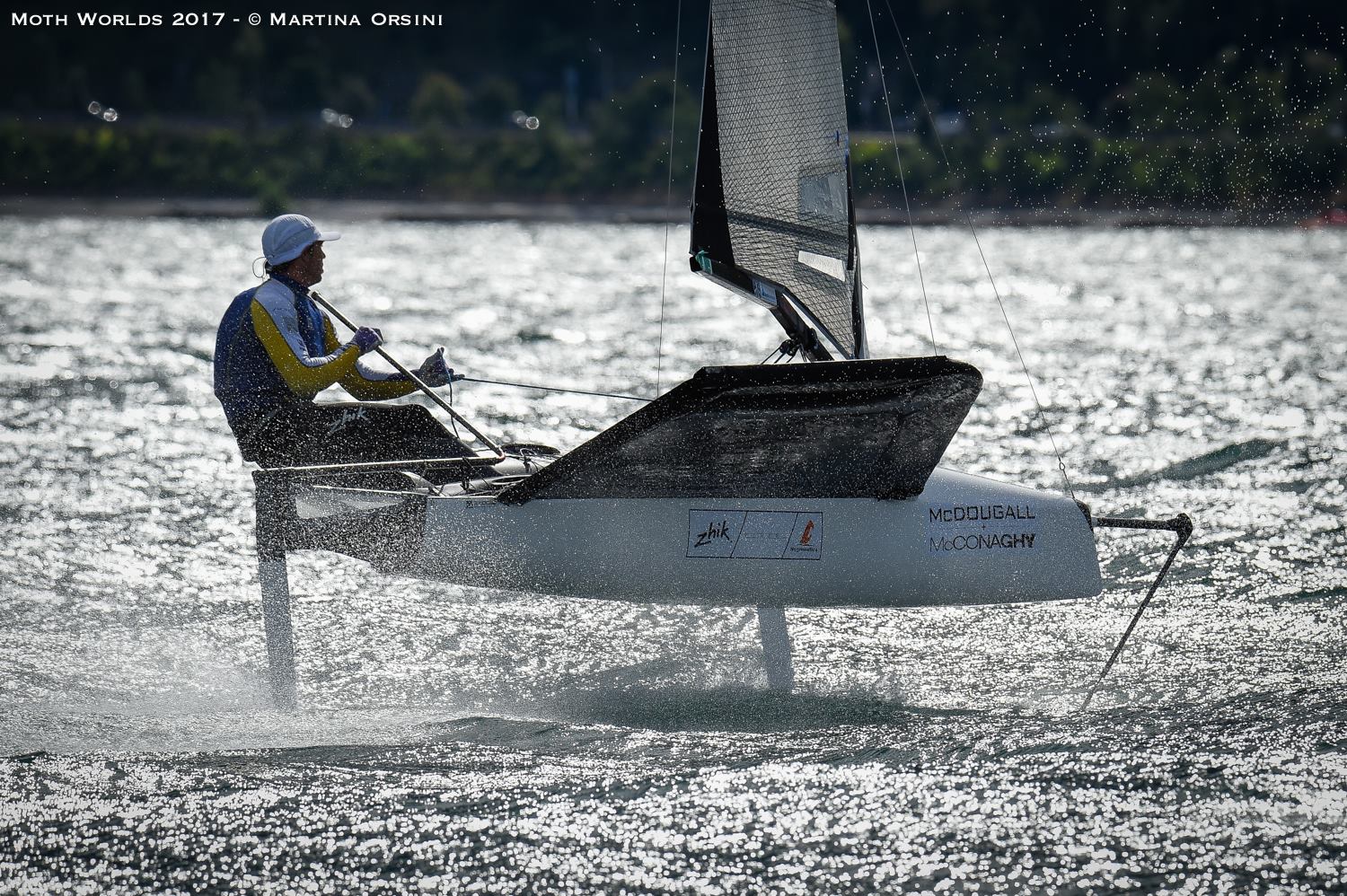With their swipes of colour on the main, National 125s are instantly recognisable on the water, but nowhere more so now than in Western Australia, where the intermediate double-hander has been seriously on the move.
In WA’s dinghy sailing scene, there’s keen interest in why this fleet has surged in recent years, at five Perth metropolitan clubs but also in two distant regional towns of Esperance and Geraldton. In June, when most dinghy sailors were watching the footy, the 125s were out sailing at the Batavia Regatta in Geraldton. In April, 34 boats turned out for the State Championship in distant Esperance. Alright, seven of those were jib-and- main entries, but many had driven 700 kilometres to get there! When it comes to 125s, it’s all about being part of the vibe, not just the silverware.
WA President Andrew Tailor puts the current health of the class down to getting the basics right and sticking at them, rather than exotic new ideas. He’s modest about where the class is at, but unsurprised. To him, good numbers and happy sailors are the result of WA’s 125 community holding great events, helping members when they need it and communicating well, particularly on Facebook.
“You know, we’re a different mob – we’re not purely about the racing. We like to have fun off the water and that appeals to a lot of people,” he said.
A decade ago, 125s comprised a rash of teenagers, and they’re still in 125s, but now you’re just as likely to find mother-son or father-daughter combinations turning up at the start line too. It helps of course to have a great design – the 3.83m hard-chined dinghy is stable and forgiving, but also fast and difficult to sail extremely well. It performs exceptionally well in a breeze, is light at 50kg and easy to maintain. Stitch and glue ply boats are still competitively sailing in fleets, though most have gone over to foam-sandwich construction. No matter what entry point you choose, a 125 is also a lot easier on the wallet than some other designs.

A strong fleet of Western Australian 125s competed in the recent Walpole in the Trees regatta. Photo: George Coop
The West Aussies have Australia’s largest 125 fleet, but the national footprint is strong too – Victoria, the home of the class, is the next biggest fleet and there’s boats also in Queensland and New South Wales making a solid resurgence, in part due to the nationals scheduled for Gosford this summer. Tassie once also had 125s but doesn’t right now.
“South Australia has quite a strong fleet on the Eyre Peninsula out of Tumby Bay, Coffin Bay and Whyalla, but not in metropolitan Adelaide, which is a bit of a shame,” Tailor said.
“Like all classes, we’re suffering a little with the loss of juniors to the pathway classes but what we’ve found is the class has proliferated with father-son, father-daughter, mother-son – that sort of combination. Going back to the 90s we were probably more junior-orientated but we are very much still a family class.”

In WA, the feeder class for 125s is generally Pelicans, but new sailors have also come into 125s from adult learn-to-sail classes, mostly run in similar-shaped and sized Pacer trainers. But Tailor maintains it’s not enough to attract sailors; there also needs to be a range of boats for newcomers to choose from.
“When I came back into the class there was a definite lack of boats for people to buy,” he said.
“Sailors at the top end of the fleet turning over their boats, to make them available for others, was important keeping the entire fleet healthy. Proactive leadership was vital too.
“It’s a combination of things but you’ve always got to go back to the people that are running the class. If those people are not making the effort to create events, communicate with people, to help people buy boats, help people when they need help, then nothing works.
“At that point, it then becomes about pushing a single-line message about the class … that we’re still around, we’ve got good numbers, we like to visit different clubs and most of all have fun.
“It’s about getting together after sailing, rubbing shoulders instead of getting in the car and going straight home. With our mix too, the best thing people can observe about the 125 class is adults and youths mingling together, and there’s a real rite of passage about going through the 125 class.
“Often the kids come in as young teens, then they sometimes exit the class in their late teens or early adults. It’s a nice feeling to see them grow and mature and
they remember those things for the rest of their lives.”

Down Under Sail spoke to one WA sailor who’s seen small boat racing from all angles, then did a season in 125s with his teenage son.
“One of the greatest joys in life is being able to sail with your family, particularly your children. This class allows kids to enjoy sailing in a harmonious way with good fleets and terrific camaraderie with adults – who, most importantly, are sailing with them,” he said.
Tailor admits the young ones often move on, but that’s sailing.
“Some go to Sharpies, just recently we’ve seen a few go to 505s because the worlds are coming to Perth, some go to Cherubs and a lot go into offshore racing. We try to hang on to them as long as we can, but if you keep the class going and there are spots there for them to sail, you do hang on to a lot of them too.”
He keeps a close eye on clubs that might have a place for 125s, but says you can’t rush it.
“You can’t just walk into a club and say ‘here’s our boat, we want to sail here’. It’s also got to be up to the club to take us on, so it’s a two-way street,” he said.
In WA, the strongest fleet is at Nedlands, but 125s also sail out of East Fremantle, South of Perth, one at Mounts Bay, several at Maylands and Geraldton, the coast club at Hillarys and also Esperance.
“I don’t look at the numbers at a club. I think once you’ve got someone sailing there, they’re keen and you can then get your fleet sailing there invitationally or for championships or whatever, things start to happen, but it does take a number of years. Rarely does it happen where a club says ‘this is where we’re going’ and a fleet pops up straight away,” Tailor said.
Esperance Yacht Club on the south coast is a case study – 717 kilometres and seven hours from Perth, the town boasts great sailing conditions but is isolated. Yet, at the moment it has more than a dozen 125s and hosted this year’s State Championship.
“We’ve had a fleet there for 35 years and it’s waxed and waned, but a fellow called Simon Coxall came along, he had three kids and saw that the pathway for his kids was Pelicans into 125s, so he got on board and really drove it. Without people to make it happen, it doesn’t happen,” Tailor said.
“I don’t think the formula’s any different from state to state, it comes down to enthusiasm and people wanting to work on it.”
The class has kept up with changes, but in a sensible way. It dabbled with mylar sails for a little while but there was not much of a cost benefit and it would have stayed with dacron jibs anyway. Carbon fibre is allowed in spinnaker poles, rudder boxes and foils for longevity reasons, but not in the hull. Drop style cassette rudder blades have replaced swing rudders to reduce maintenance and any rule change proposals are cautiously assessed.
Annual events like the Rob Webb Travellers Series are popular – a touring series named after popular life member Robb Webb who died of cancer in 2015, with proceeds going to the Andrew Dean Cancer Foundation for Brain Cancer Research.
While not claiming credit for their endeavours, several recent WA success stories have all spent time in 125s – this month, Simon Barwood finished third at the Mirror Worlds, Ryan Donaldson came 33rd at the 49er Europeans, Zoe Thomson 19th in the Laser Radial U21 Worlds and Connor Nicholas won the Nacra 17s C Foils Europeans.
“They all spent part of their pathways in 125s.”
Tailor’s for’d hand, Chloe Back (16), is typical of young 125-ers. Now in training for a tilt at the national title, Chloe came out of Pelicans two years ago and has loved the new boat.
“It was really good as a next step up for me, I needed a new sailing challenge and Andrew took me on board. It was really fun getting out on the wire, which was all new to me – it’s a really inclusive class. At other clubs there’s junior sailors so when we get together for regattas it’s always fun,” she said.
Interestingly, national numbers aren’t always a good barometer for how the national fleet’s travelling, with numbers often fluctuating from 20 to 30, but Tailor says that reflects the nature of the class.
“A lot of people going to our nationals are really families going on a holiday and if the place is attractive for a holiday then we tend to get the numbers,” he said.
“For example, we had the nationals in Esperance in 2010 and we got 34 boats at that nationals. This year they are at Gosford in New South Wales, then Queensland, then South Australia, then Western Australia again. It’s a big drive, but four or five WA boats will definitely make the journey to Gosford this year.”
For contacts about the National 125, head to the class website at www.125assoc.com or check out the 125 WA Association Facebook page.





